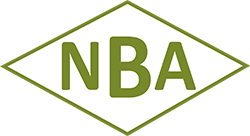Final Phase of Scotland’s War on BVD
9th April 2015
Region: National
Warning: Do you know your Bovine Viral Diarrhoea (BVD) status?
If you don’t then you need to act NOW as from June this year Phase 4 of the BVD eradication scheme in Scotland will start
The permanent eradication of Bovine Viral Diarrhoea [BVD] in Scottish cattle moves a step closer in less than 60 days, as the Scottish Government’s campaign to control the disease enters its final phase. This is known as Phase 4 of the scheme, and starts in June. So far 83% of Scottish holdings have officially gained Negative Status for BVD, which means freedom from infection – and restrictions. The Scottish Beef Association warns that livestock farmers on non-negative farms need to act now if they are to have the freedom to move and trade in cattle after the deadline.
· In June, the 17% who have not achieved negative status will be unable to move stock off their farms, except to slaughter.
· To achieve Negative Status after this date, farmers must screen all calves, or virus test their whole herd.
· Up to the deadline, farms still have the option to screen by testing at least 5 animals per management group within 9- 18 months or 10 animals per group if they must be tested between 6-18 months) using the antibody test.
At present, Scottish law states that all breeding herds must carry out an annual approved BVD test, giving the herd a BVD status which is recorded on a central database. This status should be declared when selling cattle. It’s illegal to knowingly move a Persistently Infected (PI) animal other than direct to slaughter. PI animals have had a positive BVD virus test and are permanent shedders of the virus.
In addition to the new Phase 4 restrictions, cattle from herds that have non-negative status must be tested before movement into a negative herd.
Scott Henderson, Chairman of the Scottish Beef Association, adds: “The eradication of the disease has been a prime focus in Scotland for some time. The Scottish Government wants to protect the industry from infection from PI animals in Europe, and that includes the rest of the UK. This is a big issue in Scotland, and it will also be important for all farmers who trade across the Border.”
BVD leads to many conditions in cattle and calves that are born to PI mothers. These include
· increased levels of infertility,
· extended calving to conception intervals,
· increased services to get cows in calf,
· abortions and neonatal deaths,
· mucosal disease,
· viral diarrhoea,
· deformed calves, e.g. cataracts, brain damage, and
· immuno-suppression in young calves which can lead to increased severity of scour and pneumonia.
The disease is spread through nose-to-nose contact, urine, faeces, tears, saliva and, sometimes, semen and embryos. A major source of BVD infection is animals whose mothers have been exposed to the virus in early pregnancy.
Recommended means of control focus on
· the immediate culling of PI animals,
· increased bio-security on the farm, including 6 metre boundary between farms to minimise contact between herds,
· quarantining and testing of new unknown animals to the herd, and
· regular testing using Option 1 of the Scottish Government’s requirements – as described above.
If cattle from a farm that remains untested, or is non-negative, is brought onto a negative farm, the negative status is suspended. The herd will face the same restrictions as a ‘non-negative’ herd and be unable to move animals off the holding, other than direct to slaughter unless they have been individually tested virus free. This measure has been introduced to prevent herds from becoming unknowingly infected with BVD from animals of unknown status and then spreading the disease further unwittingly.
ENDS
Media Contact: Glendale PR, T: 01668 283 044, E: [email protected]

